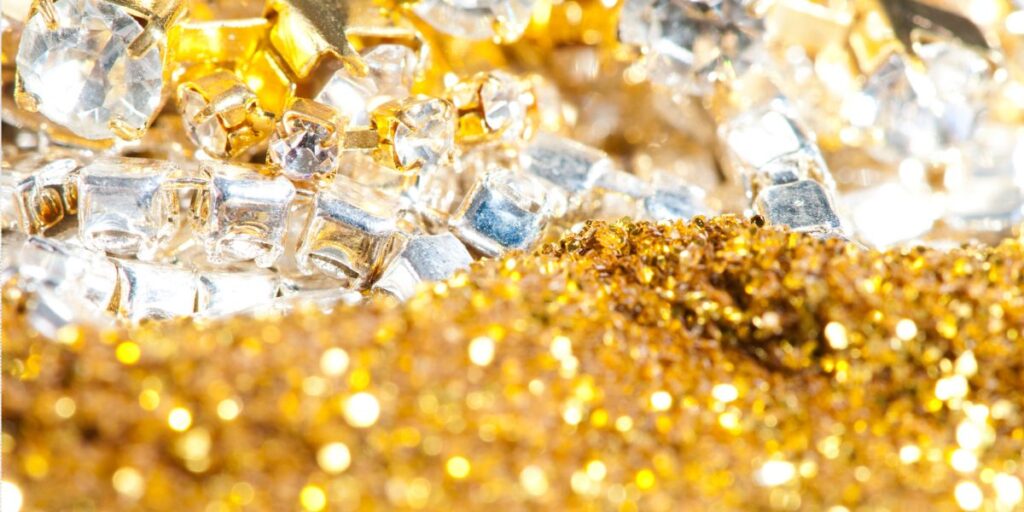How and Why Metals like Gold and Silver Can be Allergic to Skin

Metal allergies are becoming increasingly common, affecting millions of people around the world. One of the most common metal allergies is to precious metals such as gold, silver, and nickel. If you experience symptoms such as skin rashes, itching, or swelling after wearing jewelry or other items made from these metals, you may have an allergy to them. So, read on and find out more about this common cause for contact dermatitis.
Gold and silver are considered to be low in their allergenic potential. This makes them safe and hypoallergenic for people with sensitive skin. However, some components of gold and silver jewelry can cause concern, so staying safer is crucial.
According to Sharif Khan from Petra Gems, most loose diamond buyers with sensitive skin know about allergies, including those caused by metals in jewelry and engagement rings, yet many are unaware of their causes. Hence, it is difficult to avoid the problem, which may lead to overexposure. It can also cause you—out of skepticism—to avoid jewelry items that you should not be staying away from.
Metal Allergies
Like other allergy reactions, metal allergies cause your skin cells to gather tiny metal molecules. Your body perceives them as invaders and responds to them by mounting an immune response. Therefore, you may experience redness, irritation, swelling, rash, blistering, or scaling where the metal comes in contact with your skin. The latter responds the same way each time you are exposed to the metal.
Frequent use of metal, particularly gold and silver, can cause skin irritation or allergies. Metal allergies can have several causes, the most common being dermatitis, which results from the body’s response to metal or any of its components.
An allergic reaction may also occur if a metal with the body’s sweat and oils. Nickel, chromium, cobalt, and other metals can induce an allergic reaction. Additionally, a chemical coating that protects some metals from tarnishing, including gold, may contain allergen-causing ingredients.

Gold and allergic reactions
Some people are known to experience an allergic reaction when wearing gold jewelry. The precise origin of this reaction is unknown, though there are several plausible theories.
It is believed that nickel residues, which can cause allergies in some people, may be present in the gold used to produce the jewelry. 14k white gold comprises 58.5% fine gold, 12% copper, 8% nickel, 6% zinc, and 4.5% silver.
Another explanation is that the impurities in gold jewelry could irritate the skin and trigger an allergic reaction.
However, a simpler explanation would be that due to tarnishing or the accumulation of sweat, grime, and oils on gold jewelry, an allergic reaction might be triggered, even with minimal use. If you are known to be allergic to gold, dermatologists advise that you stop wearing it to prevent any negative responses.
Silver
Silver does not cause skin allergies, although some silver-based products, such as nickel, can. This can also lead to dermatitis and cause discomfort if not treated immediately.
When the nickel in silver comes into touch with sweat and body fluids, it irritates the skin. Other metals like chromium or cobalt, which—as mentioned before—can potentially cause skin sensitivities, can also be found in silver jewelry.
Nickel is a commonly used metal in many different types of items, including jewelry, zippers, and other items. It is also one of the most common causes of metal allergies. Symptoms of a nickel allergy include redness, itching, and blistering of the skin where the nickel is in direct contact. In severe cases, the skin may become infected.
Silver also includes sulfides, which in some persons can result in rashes. If you have sensitive skin, it is crucial to learn about the components used to produce silver jewelry and search for hypoallergenic solutions.
How to Avoid Metal Allergies?
We recommend that you learn about the root causes of these allergies. In a nutshell, nickel, an alloy used in gold and silver jewelry, is usually the primary culprit. It can induce multiple skin reactions, including redness, itching, and even blisters in people sensitive to the alloy.
The easiest method to avoid an allergic reaction is to ascertain that you purchase hypoallergenic jewelry, such as titanium and stainless steel. This indicates that the metal used to make the jewelry has undergone testing and is proven free of any substances causing allergies. You can also opt for jewelry that is coated with a non-allergenic material to protect your skin from contact with the metal. Additionally, it is important to clean your jewelry regularly to remove any allergens that may be present.
Please also carefully read the labels on the jewelry you want to purchase. Look for jewelry with the stamps “14K” or “18K,” which denotes a larger proportion of gold and a smaller proportion of nickel. Similar rules apply to silver jewelry; try to find jewelry marked “925” sterling silver, composed of 92.5% pure silver and 7.5% alloyed metals.
If you have already developed an allergy to a metal, it is important to seek medical attention as soon as possible. Your doctor can provide you with a treatment plan that may include medications, creams, or other remedies to help relieve your symptoms and prevent future reactions.
If you make this, please leave a review and rating if you liked this recipe! ★★★★★






